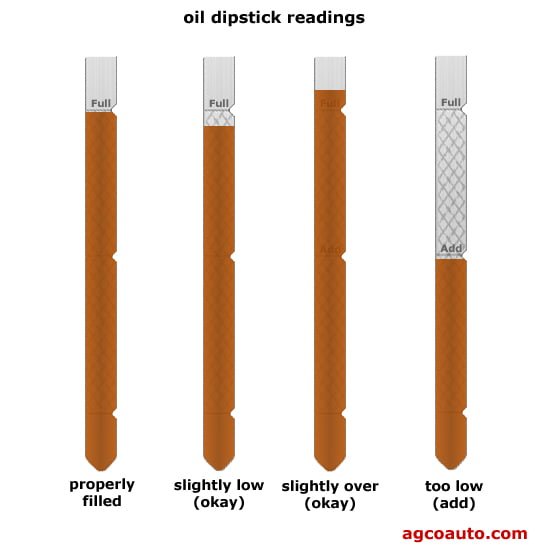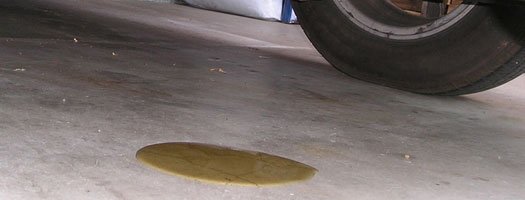
A few years back, I was on a three-hour road trip with a friend. He was riding in his recently purchased 1972 Pontiac Firebird and I was following behind him in my car. The Firebird had the awesome Pontiac 455 motor in it that sounded great and seemed to run fine. We were headed south and excited about our trip as I noticed a haze starting to form on my windshield. I turned on the windshield wipers and attempted to clean the haze off. It was one of those washes where it got worse before it got better, but once I could see again I noticed the hazed looked a lot like dirty engine oil and there was a decent amount of smoke coming from my friend’s Pontiac. I gave him a quick call and we pulled off at the next gas station. We checked the oil in his car and found it to be so low it didn’t even show up on the dip stick. After adding 2 quarts of oil, we fired up the 455 and started looking underneath to see where the smoke was coming from. It turned out the rear main seal had started leaking. Badly. While driving at highway speeds, the leaking oil was blowing back onto the exhaust pipes and burning.
Our solution (not recommended at all, by the way) was to buy a few extra quarts of oil and continue on down the road stopping to add oil every 30 minutes or once the oil pressure gauge started to fluctuate. We did end up making our destination without causing any further engine damage but my friend spent a significant amount of money on oil that was now spread evenly across the hood and windshield of my car.
Do I have a rear main seal leak?
Many people believe that as long as the oil pressure gauge is reading normally, or the low oil light is not on, then there is plenty of oil in your engine. Unfortunately, this is not the case. The low oil light in your car functions off of oil pressure, not the actual level so it is no more reliable than an oil pressure gauge. Oil pumps in motors are designed to be nearly indestructible and to outlast the engine itself. This is a very good thing since they play a key role in keeping your engine running. The oil pump draws oil from low in the deep part of your oil pan to make sure there is enough oil. It pumps it through the oil filter, then to other parts of your engine that need lubrication like to the cam shafts, valves and lifts or the turbocharger if your engine is equipped. That oil is then allowed to drain through small passages back to the oil pan.
The other main component in your engine that requires oil for lubrication is the main crack shaft, connecting rod and pistons. In most engines in passenger vehicles, the crank, rods and pistons are splash lubricated. This means that as the crack shaft spins, the arms are dipped down into the pool of oil in the oil pan of your car. Each time the crank arm and connecting rod moves through the oil, it splashes it onto the necessary bearings of the connecting rod, piston and cylinder walls to provide lubrication there. Having the proper amount of oil in your oil pan is extremely important to make sure this splash lubrication system functions properly.
 As long as the oil level is high enough to cover the inlet of the oil pump, you will have adequate oil pressure and no warning light. In most vehicles, you can have oil covering your oil pump inlet, but the level will be too low to adequately lubricate the crack shaft. This is why it’s important to check your oil level on the dip stick frequently, especially if you suspect you have a leak. Oil level should always be checked with the car parked on a level surface with the engine turned off. Wait 3-5 minutes after turning your car off then check the oil level to ensure a proper reading. Be careful as it may be hot!
As long as the oil level is high enough to cover the inlet of the oil pump, you will have adequate oil pressure and no warning light. In most vehicles, you can have oil covering your oil pump inlet, but the level will be too low to adequately lubricate the crack shaft. This is why it’s important to check your oil level on the dip stick frequently, especially if you suspect you have a leak. Oil level should always be checked with the car parked on a level surface with the engine turned off. Wait 3-5 minutes after turning your car off then check the oil level to ensure a proper reading. Be careful as it may be hot!
A leaking rear main seal can quickly lower the oil level in your engine below acceptable limits. Part of the rear main seal may be below the acceptable oil level in your engine so the oil will leak out quickly even if the car is not running. The seal is also in the area of the engine where splash lubrication occurs so a lot of oil can leak quickly while the engine is running.
The rear main seal, although a small part, is very difficult to replace. It seals the last bearing on your crank shaft and is usually between the block and the oil pan. To change the seal the transmission will definitely need to be removed along with the fly wheel. Usually these seals are easier to replace with the motor removed from your vehicle which can lead to an expensive repair bill.
How do I fix a rear main seal leak?
The best way to fix a rear main seal leak is to recondition the seal that’s currently in your vehicle. Adding BlueDevil Rear Main Sealer to your engine oil will allow your rear main seal to be reconditioned as you drive your vehicle in 2 days or less. BlueDevil Rear Main Sealer will restore the cracked, shrunken or dried seal in your engine, sealing your leak and helping you keep your engine oil at a safe level.
BlueDevil Products can be found on Amazon.com or at AutoZone, Advance Auto Parts, O’Reilly Auto Parts, NAPA, and other major auto parts retailers.
Related Articles



